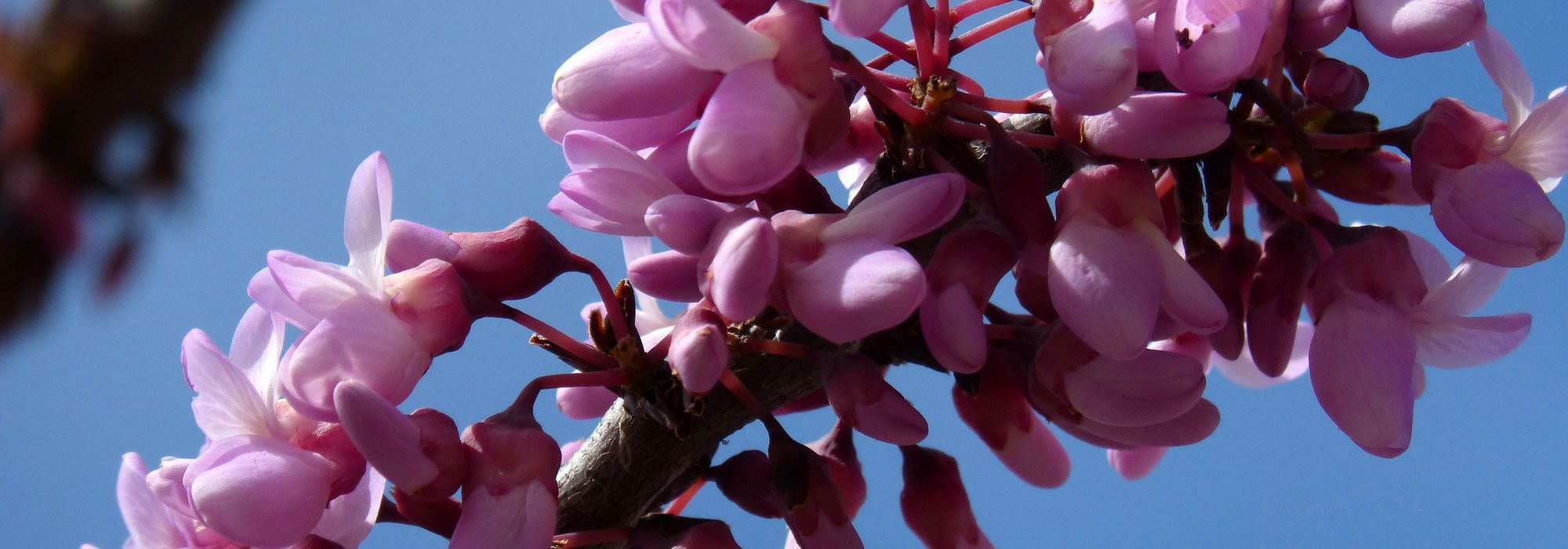
Cercis, Judas tree, eastern redbud: planting, pruning and care
Contents
Cercis, in a nutshell
- Cercis are small hardy trees or bushes whose spectacular spring flowering unfolds on still naked branches.
- The Judas tree has modest dimensions, making it suitable for planting in many gardens.
- The small round leaves offer lovely golden hues in autumn as well as in spring. Some varieties provide exceptional purple bronze foliage throughout the beautiful season.
- They thrive in deep, acidic to calcareous soils, in a sunny or even partially shaded position depending on the species, sheltered from the wind, and they tolerate urban pollution well.
A word from our expert
The Judas Trees or Cercis are elegant hardy trees, easy to grow and very floriferous. In spring, purple-pink or white flowers bloom on the still naked branches. Although typical of Mediterranean landscapes, the Judas tree Cercis siliquastrum grows as far as the Paris region. It is one of the few trees to exhibit the phenomenon of cauliflory. Indeed, its small flowers, reminiscent of those of the pea, emerge in tight clusters directly on the trunks, highlighting their contours in an astonishing way, between March and May. The shades are more or less intense but tend towards cyclamen pink. The round light green leaves accompanied by reddish-brown pods appear at the end of flowering and provide a light shade. The mature tree forms a remarkable specimen when isolated, measuring between 5 and 10 m with a dark, twisted trunk and a rounded crown. The canadensis species has given rise to recent cultivars with foliage coloured in purple-red, variegated with cream or an extraordinary bright yellow in season, displaying sublime autumn colours with weeping or twisted habits, and dwarf forms for container planting…
Cercis thrive in all gardens, they are very hardy, tolerate partial shade with cool soil while others prefer a rather dry and sunny position, sheltered from cold winds. They grow in all soils, from acidic to calcareous, and from cool to well-drained, and they withstand drought well once established. They do not like to be transplanted, so choose trees grown in containers to facilitate recovery. Pruning is unnecessary.
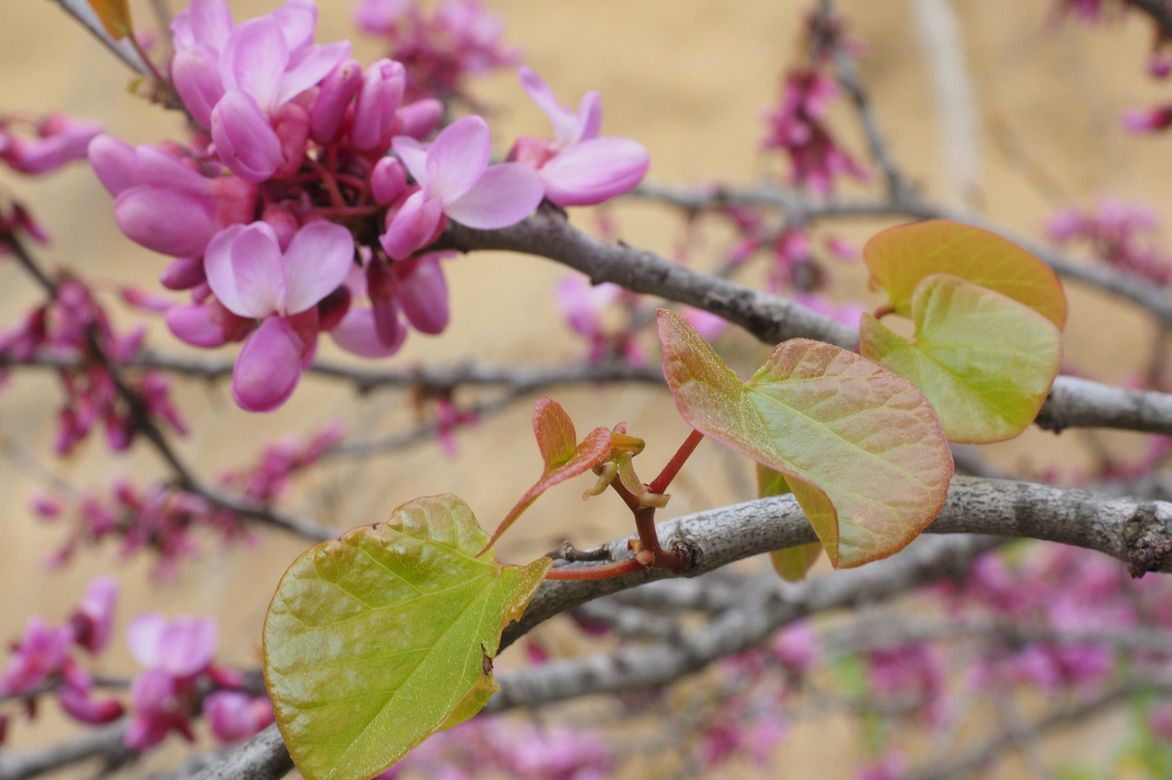
Cercis siliquastrum: remarkable for its heart-shaped leaves and purple-pink flowering.
Description and botany
Botanical data
- Latin name Cercis sp.
- Family Fabaceae (Caesalpiniaceae)
- Common name Judas tree, Eastern or Canadian redbud, Chinese redbud
- Flowering between March and May
- Height between 2 and 10 m
- Sun exposure full sun to partial shade
- Soil type all deep, rich soils, not too heavy
- Hardiness Good to excellent depending on the species (-12 to -28°C)
The genus Cercis includes 10 species of small trees and bushes found in Southern Europe, Asia, and North America. The most common species in our area is the Judas tree (Cercis siliquastrum) which grows from the Mediterranean coast to the Paris region due to its fairly good hardiness of around -15°C. The tree has a naturally very ramified habit from the base, with twisted trunks and branches. The shade it provides is light, especially if trained on a single trunk, as the heart-shaped leaves (rounded at the top), tinted light green, rarely exceed 6 to 12 cm in diameter. After a rather slow start that brings it to about 3 m high in 4 years, its growth slows down further, resulting in a tree with a rounded and airy crown reaching up to 8 m. The foliage of Cercis is simple, a rare case among the Fabaceae, cordate (heart-shaped), alternate, and deciduous. The veins radiate from the base of the lamina.
The species Cercis canadensis (known as “Canadian redbud”), much hardier than siliquastrum (-28°C), is gaining increasing popularity thanks to the selection of forms with beautiful foliage such as ‘Forest Pansy’, reddish-purple to orange-red, which extends its appeal throughout the season, sometimes evolving to dark green, leading to a fiery autumn display. Cercis canadensis ‘Ruby Fall’ additionally features a weeping habit and low vigor, ideal for container cultivation. Cercis canadensis ‘Lavender Twist’, capable of reaching 3.50 m wide and 2.50 m tall, offers a Japanese-style habit with the deployment of twisted and weeping branches down to the ground. Cercis canadensis “Silver Lining” features dark green foliage variegated with cream and purple flowers.

Cercis canadensis – botanical illustration
The Canadian redbud populates the central and eastern United States, from Mexico to Lake Erie, and naturally forms a clump, reaching up to 3.50 m in cultivation and 12 m in the wild. Its heart-shaped leaves are pointed at the top with a distinctly swollen petiole at the point of attachment to the lamina. They are slightly larger than those of siliquastrum, measuring between 8 and 13 cm wide, and are, in the typical species, pale bluish-green on top, lighter underneath. The flowers, measuring 10 mm, are borne on a peduncle almost as long. The variety ‘Little Woody’ is characterized by the wrinkled appearance of its leaves, while ‘Hearts of Gold’ boasts spectacular red foliage, turning golden yellow, then chartreuse in summer.
The species chinensis, which measures 4.50 m and 15 m in the wild, is remarkable for the abundance of flowers that sometimes form an impressive tuft on the trunk and branches in April. Its deep green heart-shaped foliage turns golden yellow in autumn and is larger than that of other redbuds.
It should be noted that Cercis have the rare characteristic of being cauliflorous and benefiting from an early flowering which offers the sight of a trunk and branches almost entirely covered in flowers. The buds are coloured a darker purple than the corolla before blooming, which extends the appeal of the flowering. The flowers vary in hue from white in Cercis siliquastrum ‘Alba’ to red-pink in ‘Rubra’, passing through soft violet in ‘Lavender Twist’. The pea-like flowers, about 1 cm in size, are quite small, with a poorly developed banner, and consist of 5 free sepals, 5 petals, fewer than 10 stamens, and one pistil. They are melliferous, delighting pollinators early in the season. The richly coloured young foliage appears towards the end of the flowering as the flat pods begin to redden. These measure between 5 and 10 cm long and contain hard, round, flat, shiny brown seeds. The brown-red fruits appear in summer and persist on the plant in winter, much to the delight of the tits.

Flowers of Cercis siliquastrum, purple foliage of Cercis canadensis ‘Forest Pansy’, chartreuse foliage of Cercis chinensis ‘Avondale’ (Megan Hansen), fruits of Cercis siliquastrum (Tatters).
The main varieties of Cercis

Cercis siliquastrum - Judas Tree
- Flowering time May, June
- Height at maturity 10 m

Cercis chinensis Avondale - Chinese Redbud
- Flowering time May
- Height at maturity 2 m

Cercis canadensis Forest Pansy - Eastern Redbud
- Flowering time April, May
- Height at maturity 5 m
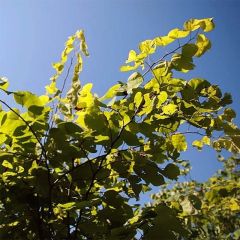
Cercis canadensis Heart of Gold - Eastern Redbud
- Flowering time April, May
- Height at maturity 4,50 m
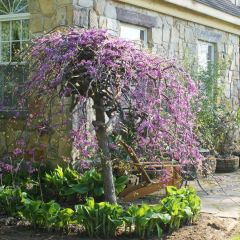
Cercis canadensis Lavender Twist - Eastern Redbud
- Flowering time May, June
- Height at maturity 3,50 m

Cercis canadensis Ruby Falls - Eastern Redbud
- Flowering time April, May
- Height at maturity 2 m
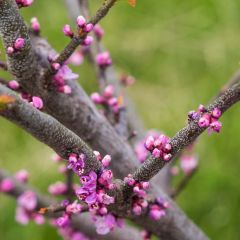
Cercis canadensis Little Woody - Eastern Redbud
- Flowering time May, June
- Height at maturity 2 m
Discover other Cercis
View all →Available in 1 sizes
Available in 3 sizes
Available in 1 sizes
Available in 2 sizes
Available in 2 sizes
Available in 2 sizes
Available in 1 sizes
Available in 1 sizes
Available in 1 sizes
Available in 2 sizes
Planting Cercis
Where to plant the Judas tree?
Cercis siliquastrum and chinensis thrive in sunny locations and any type of soil as long as it is rich, well-draining, and moist to dry. They adapt well to calcareous, rocky soils.
Cercis canadensis naturally grows at the edge of woods and even within deciduous forests. It prefers cool, rich, well-drained soils and sunny but cool or partially shaded locations. Once well-established, it can withstand relatively long periods of drought. Its great hardiness allows it to endure severe frosts down to -28°. The foliage is, however, more colourful when exposed to sunlight.
In any case, plant them in a sheltered area from strong winds as the wood is quite brittle and the branch insertions are fragile.
Dwarf varieties like Little Woody or Avondale can occupy a deep pot lined at the bottom with 10 cm of clay balls or gravel and filled with good potting soil.
When to plant?
Plant Judas trees and Gainiers in autumn-winter between November and March, avoiding frost periods to ensure deep rooting before facing summer drought. Container-grown specimens can, however, be planted all year round. However, if your winters are harsh, choose spring, especially for the species siliquastrum.
How to plant?
To plant your Judas tree:
- Soak the root ball in a bucket of water to thoroughly moisten it.
- Dig a planting hole 50 cm in all directions or a trench in the case of a hedge.
- Add a 10 cm drainage layer (gravel, sand…) if your soil is clayey.
- Add manure, good compost, or potting soil if the earth is poor.
- Place the plant in the planting hole.
- Replace the soil and lightly compact it.
- Water.
- Spread a layer of mulch at the base to protect the roots from the cold during winter or to maintain good moisture around the roots during summer. This will also limit the growth of weeds.
Recovery can sometimes be slow as, like many Leguminosae, planting or transplanting is a significant stress. It is recommended to plant relatively young plants to facilitate recovery.
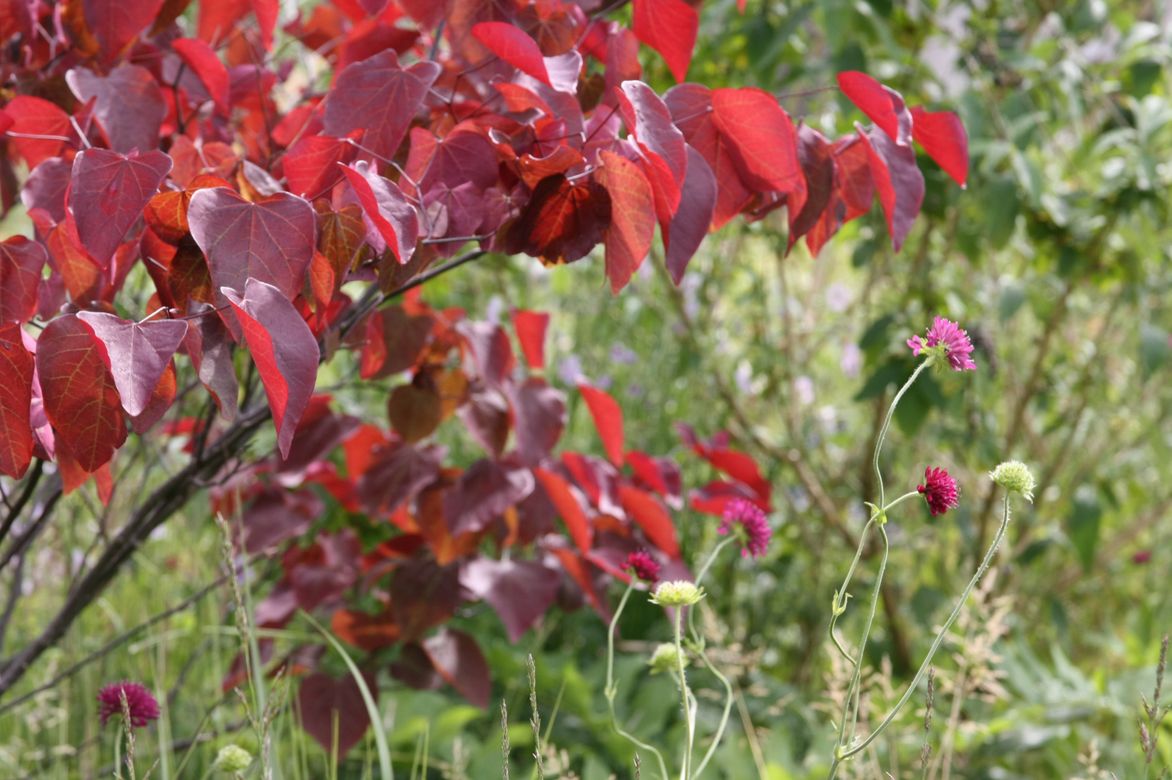
Stunning purple foliage of Cercis canadensis ‘Forest Pansy’ (Sweet Virginia).
Pruning, care and diseases
Pruning and care
Ensure to water the bush regularly during the first 2-3 years following planting by creating a basin around the root ball to thoroughly soak it. The Canadian Redbud requires even more soil moisture than the Chinese Redbud and the Judas Tree. Feel free to plant it in more shade, within a free-standing hedge or a thicket, and water it frequently during the summer months.
Young shoots may suffer during severe frosts in early spring. Protection with a winter cover may be useful in the first few years in case of a severe cold snap in March.
Cercis siliquastrum, like other species, tends to take on a bushy form. To train it into a single trunk, perform formative pruning by cutting back the lower branches to gradually raise the crown. This pruning can be done in March or after flowering.
Dwarf forms like ‘Avondale’ can be kept low by annual topping. This pruning also encourages the production of broader leaves.
Potential diseases and pests
Cercis are rarely diseased but can fall victim to the coral disease, which is rare but formidable and contagious, identifiable by orange pustules on the bark of dead wood and the gradual decline of the tree. Cut back all affected branches to healthy wood and burn the waste, then apply a fungicidal treatment such as Bordeaux mixture.
Black spots on the foliage caused by anthracnose or septoria can also be treated with Bordeaux mixture after removing the contaminated leaves. Psyllids as well as scale insects are small piercing insects that make the leaves sticky and covered in sooty mould (black deposit). If the infestation is significant, apply a mineral oil at the end of winter to destroy the overwintering forms or use pyrethrum during the season.
Take advantage of the presence of the Judas Tree to establish your orchard nearby. Not only do its roots enrich the soil with nitrogen due to the presence of a bacterium in their nodosities, but the psyllid of this tree attracts beneficial insects, a bug of the genus Anthocoris, which feeds on the psyllids of apple, pear, and olive trees.
Multiplication: cutting and sowing
Cercis can be propagated by cuttings towards the end of August using semi-ripe stems or can be grafted. Sowing is possible but does not produce plants identical to the parent, knowing that flowering occurs only after 5 to 10 years. There are forms with more intense flowering or forms with white flowers that you may not find in the offspring.
Propagation by Cuttings
Prepare a pot deep by filling it with potting soil mixed with sand, or carry out your cuttings in the ground if it is light, after aerating it with a fork, then moistening it.
- Take semi-lignified shoots of 7-10 cm in length from a current year’s shoot that is still green but hardened at the base. Make a cut perpendicular to the axis and just below a node.
- Remove the leaves near the base of the cutting, and trim the others to reduce the leaf surface.
- Dip the base of the cuttings in rooting hormone and insert them two-thirds of their height into the substrate, ensuring they do not touch each other.
- Gently firm the soil around to eliminate air pockets and ensure good contact between the potting soil and the cutting.
- Place them in a humid environment in the shade in a mini greenhouse or by covering them with a cut transparent plastic bottle.
- Remove the bottle and transplant the young plants into individual deep pots or directly in place as soon as new shoots form. Avoid successive repottings. Flowering will occur after 5-6 years.
Sowing
Prepare a plot of land in partial shade to make it soft and fertile. Seeds are harvested the previous summer when the pods are well dried. Sow in April or May, after all risk of frost has passed.
Transplant the seedlings to their final location in autumn, taking care to extract the taproot completely.
Uses and associations
Judas trees offer a striking subject with character, perfectly suited for modest-sized gardens, whether located in a Mediterranean zone or elsewhere. They can equally accompany drought-tolerant trees or bushes in a grove or a free hedge such as Montpellier Maple, Smoke Tree, and Winged Euonymus, aiming to create a vibrant scene from September to November. In cooler climates, it will integrate well into a border composed of Lilac, Kolkwitzia, Philadelphus, or Staphyllea, forming a dense bush.
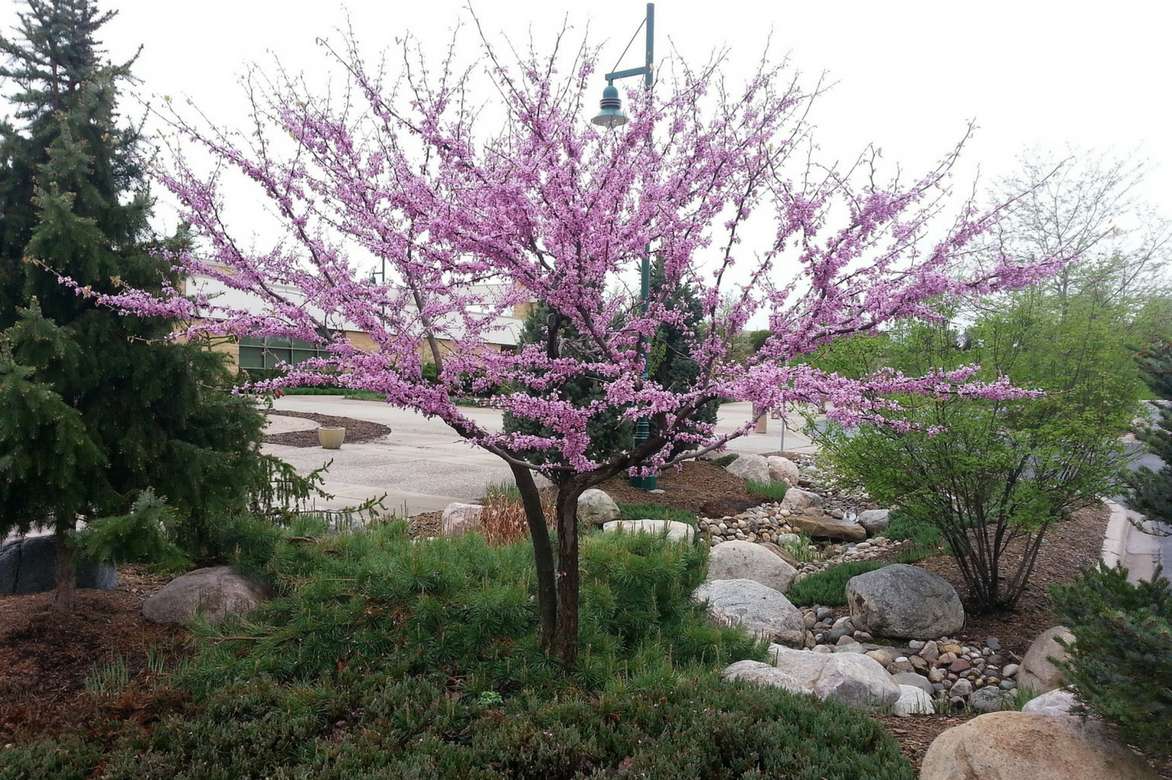
The Cercis siliquastrum forms a beautiful canopy, well highlighted during flowering.
Small Canadian Redbuds like ‘Little Woody’ or Chinese ones like ‘Avondale’ will easily find their place in a small space due to their modest growth. While their limited size may not allow them to be planted in isolation, they will certainly add flair within a border or hedge. Accompanied by a Common Pomegranate or a Flowering Cherry ‘Alba Plena’, they will contribute to a very floriferous spring scene. They are easily grown in pots to green and flower a terrace or balcony. The slow-growing Cercis canadensis ‘Silver Lining’, reaching 2-2.5 m, thrives in a protected and sunny position with rich, well-drained soil. It can be cultivated on a terrace or in a southern border, paired with Albizia Summer Chocolate in mild regions or Black Lace Elder in colder areas to provide a contrast in foliage.

An example of association: Cercis canadensis ‘Forest Pansy’, Crocosmia ‘Lucifer’, and Geranium ‘Rozanne’ (Copyright Blooms of Bressingham)
If you prefer a Redbud species with remarkable habit like ‘Ruby Falls’, do not hesitate to showcase it in isolation. Older specimens often display a twisted trunk and a parasol-like canopy, giving them a very Japanese silhouette. The young purple shoots contrast with the cracked grey-black bark of older branches. The foliage that emerges red and translucent later intensifies to a very bright purple, turning dark green with maturity in summer.
The Cercis canadensis ‘Ruby Falls’ can be planted for its presence throughout the year, particularly in a mineral-dominant space, surrounded by large rockery stones. An older specimen, carefully trained in a ‘umbrella’ shape on a winding trunk, could also look splendid on a carpet of Mascarene grass (Zoysia tenuifolia) embracing all the contours of an uneven soil, reigning in the midst of a small Japanese scene. It can also be imagined standing out against the backdrop of a wall or evergreen foliage accompanied by a ‘Plumosa Aurea’ Elder for contrast in colour and shape, with, in their shade, some clumps of Darley Heath and Hellebores for winter! Alternatively, with a dwarf Winged Euonymus and a beautiful Cotinus ‘Grace’, featuring airy summer flowers and sumptuous autumn foliage…
→ Discover more association ideas with the Judas tree in our advice sheet!
Did you know?
The leaf buds of Cercis siliquastrum relieve circulation disorders in gemmotherapy.
Cercis comes from the Greek kercis, which refers to the weaver’s shuttle due to its resemblance to the pods tapered at both ends.
To go further
- Discover our wide range of Cercis.
- Browse our buying guide to choose your Judas Tree wisely.
- Learn more about umbrella-shaped trees.
- Subscribe!
- Contents
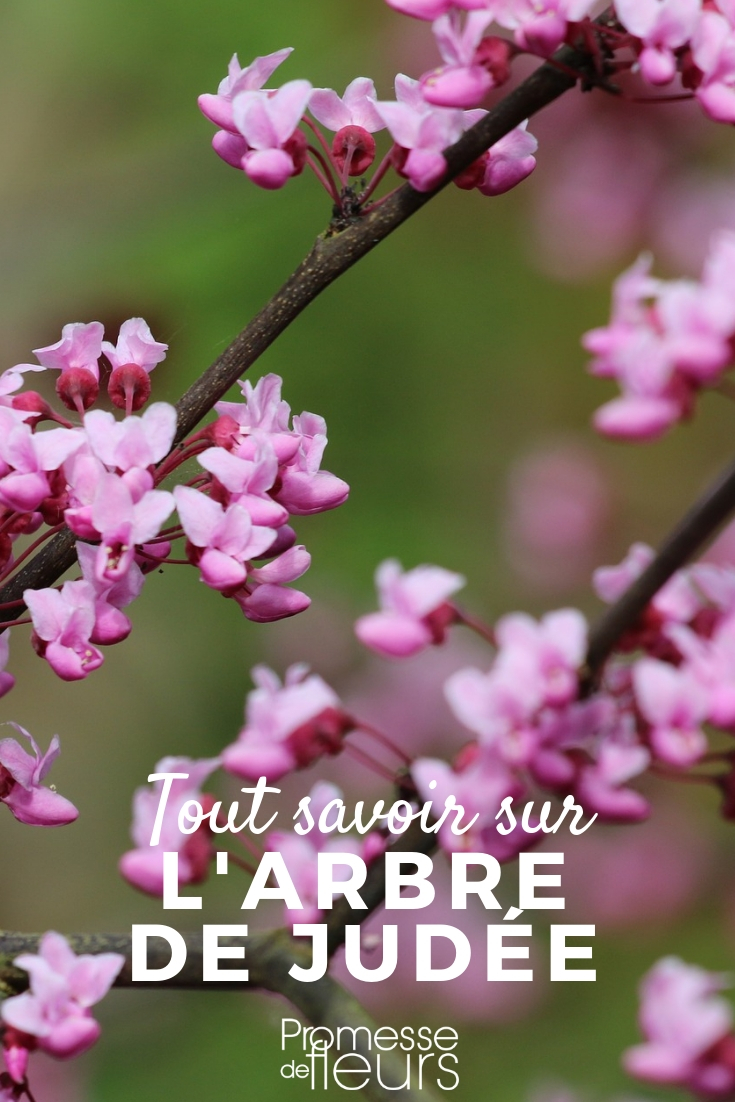































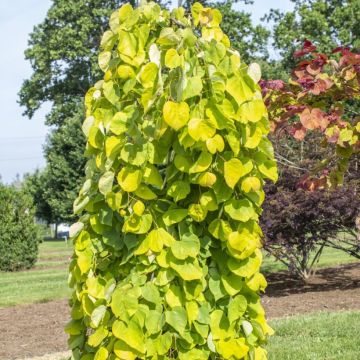
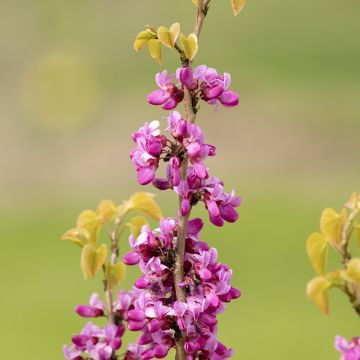

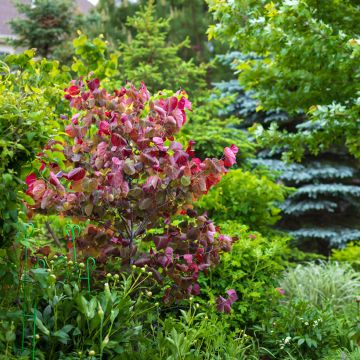
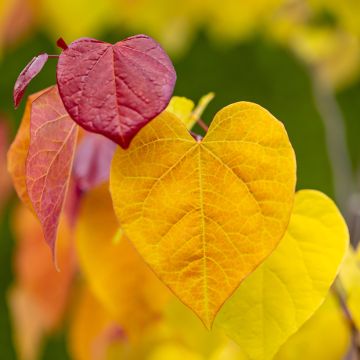

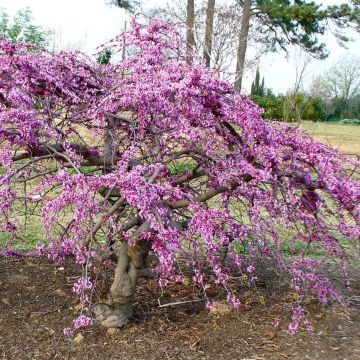
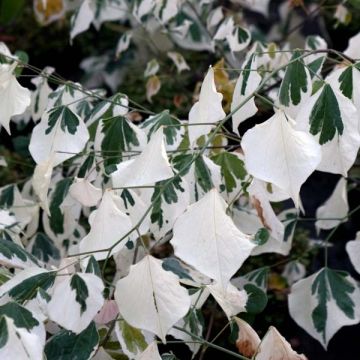
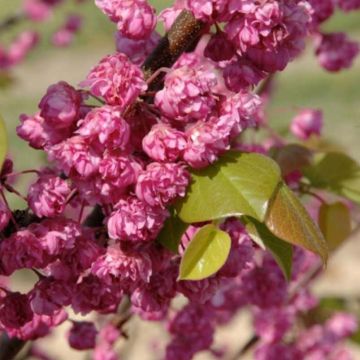
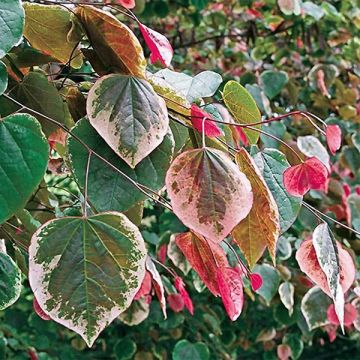
Comments